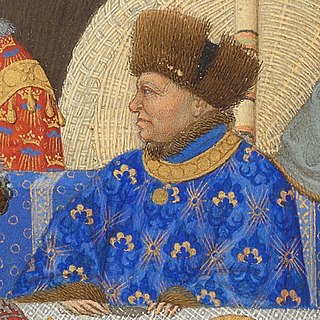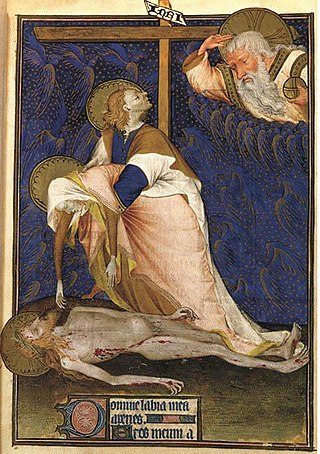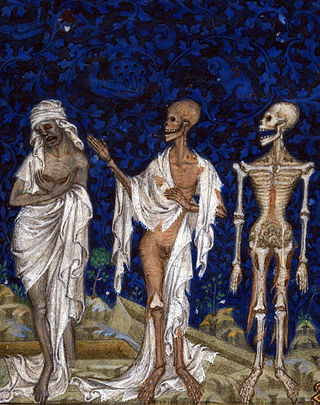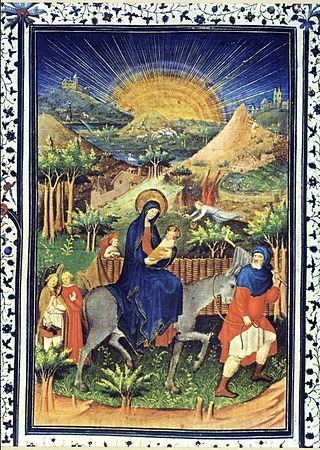![December on the calendar in Les Grandes Heures du duc de Berry [fr], f.6v, to which the artist may have contributed Grandes Heures du duc de Berry (BNF latin919) - Calendrier Decembre (f.6v).jpg](http://upload.wikimedia.org/wikipedia/commons/thumb/8/81/Grandes_Heures_du_duc_de_Berry_%28BNF_latin919%29_-_Calendrier_D%C3%A9cembre_%28f.6v%29.jpg/220px-Grandes_Heures_du_duc_de_Berry_%28BNF_latin919%29_-_Calendrier_D%C3%A9cembre_%28f.6v%29.jpg)
The Pseudo-Jacquemart (or Pseudo-Jacquemart de Hesdin) was an anonymous master illuminator active in Paris and Bourges between 1380 and 1415. He owed his name to his close collaboration with painter Jacquemart de Hesdin.
![December on the calendar in Les Grandes Heures du duc de Berry [fr], f.6v, to which the artist may have contributed Grandes Heures du duc de Berry (BNF latin919) - Calendrier Decembre (f.6v).jpg](http://upload.wikimedia.org/wikipedia/commons/thumb/8/81/Grandes_Heures_du_duc_de_Berry_%28BNF_latin919%29_-_Calendrier_D%C3%A9cembre_%28f.6v%29.jpg/220px-Grandes_Heures_du_duc_de_Berry_%28BNF_latin919%29_-_Calendrier_D%C3%A9cembre_%28f.6v%29.jpg)
The Pseudo-Jacquemart (or Pseudo-Jacquemart de Hesdin) was an anonymous master illuminator active in Paris and Bourges between 1380 and 1415. He owed his name to his close collaboration with painter Jacquemart de Hesdin.

The artist designated as Pseudo-Jacquemart was perhaps of Flemish origin and was active in France from the end of the 14th century to the beginning of the 15th century. Art historian Millard Meiss was the first to distinguish this artist from his contemporary colleague Jacquemart de Hesdin. Pseudo-Jacquemart seems to have been in the employ of John, Duke of Berry, working in the shadow of other illuminators retained by the duke: Jean Pucelle, the Limbourg brothers, and Jacquemart, at the end of his career, from whom he borrowed his style. Pseudo-Jacquemart generally painted the decorations appended to miniatures: marginal scenes, small miniatures of calendars or initials for text. [2] [3] He also worked for other anonymous patrons on books of hours miniatures, in collaboration with other Parisian painters. [4]
Pseudo-Jacquemart is sometimes identified with Jacquemart de Hesdin. [3] The two painters are mentioned as working at the Palace of Poitiers at the request of John, Duke of Berry. In January 1398, a painter, named Jean de Holland, accused them of stealing pigments and models from his box. De Holland was finally killed and the two painters took refuge in the Abbey of Montierneuf at Poitiers where they were afforded asylum. The Duke of Berry eventually obtained a letter of remission for them in May 1398. [5]
Pseudo-Jacquemart's style tended to imitate that of the painters his work supplemented, but an individualized style with a more theatrical sense of composition than seen in Jacquemart de Hesdin's work, with a more assured stroke and a brighter palette is evident. [3]
Pseudo-Jacquemart collaborated with Jacquemart de Hesdin and others on the Duke of Berry's Petit Heures; [6] the Psalter of John of Berry , [7] and Les Grandes Heures du duc de Berry , for which, according to art historian Timothy Husband he may have produced as many as 17 miniatures, but the only surviving leaf is the "Carrying of the Cross". [8] Jean Le Noir painted the calendar leafs for the Duke's Petit Heures, which Pseudo-Jacquemart may have completed. [9]
Pseudo-Jacquemart contributed work to a Book of hours for the use of Rome for an unknown lady, in the form of ornamentation in collaboration with the Mazarine Master and the Luçon Master , [10] and some of the miniatures in the Bible Historial of Guiart des Moulins, (ff. 1, 3v-5v, 7–8, 10–16), attributed to a follower of Jacquemart de Hesdin, are sometimes identified with the Pseudo-Jacquemart. [11] He completed an Annunciation for the Book of hours for the use of Bourges, c. 1405–10, held at the British Library, [12] [13] and two miniatures for the Psalter for use in Evereux, c. 1390–1405: a jester (f.44r) and Office of the Dead (f.131r). [14] The Getty Center, Los Angeles, holds a Book of hours with two images attributed to the artist. [15] The artist may have contributed to a Breviary for the use of Saint-Ambroix de Bourges , in collaboration with the workshop of Boucicaut Master, c. 1410, BM Bourges Ms.0016. [16] He also contributed three miniatures for the La Légende dorée ( Golden Legend ) of Jacobus de Voragine, c. 1382. [17]
{{cite web}}: Missing or empty |url= (help)
International Gothic is a period of Gothic art which began in Burgundy, France, and northern Italy in the late 14th and early 15th century. It then spread very widely across Western Europe, hence the name for the period, which was introduced by the French art historian Louis Courajod at the end of the 19th century.

Hesdin is a commune in the Pas-de-Calais department in northern France.

The Limbourg brothers were Dutch miniature painters from the city of Nijmegen. They were active in the early 15th century in France and Burgundy, working in the International Gothic style.

John of Berry or John the Magnificent was Duke of Berry and Auvergne and Count of Poitiers and Montpensier. His brothers were King Charles V of France, Duke Louis I of Anjou and Duke Philip the Bold of Burgundy. He was Regent of France from 1380 to 1388 during the minority of his nephew Charles VI.

Books of hours are Christian prayer books, which were used to pray the canonical hours. The use of a book of hours was especially popular in the Middle Ages, and as a result, they are the most common type of surviving medieval illuminated manuscript. Like every manuscript, each manuscript book of hours is unique in one way or another, but most contain a similar collection of texts, prayers and psalms, often with appropriate decorations, for Christian devotion. Illumination or decoration is minimal in many examples, often restricted to decorated capital letters at the start of psalms and other prayers, but books made for wealthy patrons may be extremely lavish, with full-page miniatures. These illustrations would combine picturesque scenes of country life with sacred images.

The Très Riches Heures du Duc de Berry, or Très Riches Heures, is an illuminated manuscript that was created between c. 1412 and 1416. It is a book of hours, which is a Christian devotional book and a collection of prayers said at canonical hours. The manuscript was created for John, Duke of Berry, the brother of King Charles V of France, by Limbourg brothers Paul, Johan and Herman. The book is now MS 65 in the Musée Condé, Chantilly, France.

Barthélemy d'Eyck, van Eyck or d' Eyck, was an Early Netherlandish artist who worked in France and probably in Burgundy as a painter and manuscript illuminator. He was active between about 1440 to about 1469. Although no surviving works can be certainly documented as his, he was praised by contemporary authors as a leading artist of the day, and a number of important works are generally accepted as his. In particular, Barthélemy has been accepted by most experts as the artists formerly known as the Master of the Aix Annunciation for paintings, and the Master of René of Anjou for illuminated manuscripts. He is thought by many to be the Master of the Shadows responsible for parts of the calendar of the Très Riches Heures du Duc de Berry.

The Grandes Heures de Rohan is an illuminated manuscript book of hours, painted by the anonymous artist known as the Rohan Master, probably between 1418 and 1425, in the Gothic style. It contains the usual offices, prayers and litanies in Latin, along with supplemental texts, decorated with 11 full page, 54 half page, and 227 small miniatures, decorated with tempera paints and gold leaf. The book margins are decorated with Old Testament miniatures with captions in Old French, in the style of a Bible moralisée. The full page illuminations are renowned for the highly emotional and dramatic portrayal of the agonies of Christ and the grief of the Virgin. According to Millard Meiss, "The Rohan Master cared less about what people do than what they feel. Whereas his great predecessors excelled in the description of the novel aspects of the natural world, he explored the realm of human feeling." Meiss concludes that the Rohan Master was the "greatest expressionist in 15th century France." The manuscript is currently housed in the Bibliothèque Nationale, Paris, France.
Jacquemart de Hesdin was a French miniature painter working in the International Gothic style. In English, he is also called Jacquemart of Hesdin. During his lifetime, his name was spelt in a number of ways, including as Jacquemart de Odin.

The Ravenelle Painter, also known as the Master of the Book of Hours of Johannete Ravenelle, the Ravenelle Master or the First Master of the Bible Historiale of Jean de Berry, was a French manuscript illuminator active between 1390 and 1405. Little is known about him. In a 2002 dissertation, Eva Lindqvist Sandgren used stylistic comparison to identify this artist as the illuminator of a book of hours now in the Uppsala University Library, the Ravenelle Hours. This identification is now widely accepted. An earlier notname for the same artist derives from a manuscript of the Bible Historiale, now held by the Bibliothèque nationale de France in Paris, in which he painted several miniatures. The manuscript was once owned by John, Duke of Berry, and with most books containing other work ascribed to the artist seems to have been produced in Paris. This would indicate that the artist lived and worked there, producing large secular works as well as religious treatises written in vernacular French.

The Turin–Milan Hours is a partially destroyed illuminated manuscript, which despite its name is not strictly a book of hours. It is of exceptional quality and importance, with a very complicated history both during and after its production. It contains several miniatures of about 1420 attributed to an artist known as "Hand G" who was probably either Jan van Eyck, his brother Hubert van Eyck, or an artist very closely associated with them. About a decade or so later Barthélemy d'Eyck may have worked on some miniatures. Of the several portions of the book, that kept in Turin was destroyed in a fire in 1904, though black-and-white photographs exist.

The Bedford Master was a manuscript illuminator active in Paris during the fifteenth century. He is named for the work he did on two books illustrated for John of Lancaster, 1st Duke of Bedford between 1415 and 1435. One is the Bedford Hours, a book of hours in the British Library ; the other, the Salisbury Breviary, is in the Bibliothèque nationale de France. Another manuscript is in the Royal Collection. The Bedford Master is known to have been the head of a workshop; his chief assistant is known as the Chief Associate of the Bedford Master.

The Belles Heures of Jean de France, Duc de Berry, or Belles Heures of Jean de Berry is an early 15th-century illuminated manuscript book of hours commissioned by the French prince John, Duke of Berry, around 1409, and made for his use in private prayer and especially devotions to the Virgin Mary. The miniatures of the Belles Heures are mostly painted by the Limbourg brothers; very few books of hours are as richly decorated as it.

André Beauneveu was an Early Netherlandish sculptor and painter, born in the County of Hainaut, who is best known for his work in the service of the French King Charles V, and of the Valois Duke, Jean de Berry. His work in all media shows a generally naturalistic and 'sculptural' style, characteristic of the 'Pucellian revival' of the latter 14th century.

The Petites Heures of Jean de France, Duc de Berry is an illuminated book of hours commissioned by John, Duke of Berry between 1375 and 1385–90. It is known for its ornate miniature leaves and border decorations.

Jean Le Noir was a French manuscript illuminator active in Paris between 1335 and 1380. He was a pupil of Jean Pucelle. His main work is the Psalter of Bonne de Luxembourg.

The Hours of Jean de Boucicaut is believed to have been created between 1405 and 1408. It contains the Paris Liturgy of the Hours. While characterized by typical Parisian styles of illumination, some illustrations in the manuscript are quite innovative. This manuscript contains 44 miniatures by the Boucicaut Master, possibly within the assistance of students, and is now in the Musée Jacquemart-André, Paris, ms. 2. The Boucicaut Master experimented with perfecting aerial perspective and with his works established the precedent of historically portraying biblical scenes. Jean de Boucicaut, who was a Marshal of France, commissioned the book as a tool of daily devotion. The illuminated pages correspond to events in Marshal Jean de Boucicaut's life as well as incorporating biblical figures with whom he identifies.

The Hours of Jeanne de Navarre is an illuminated book of hours with miniatures painted by Jean Le Noir. The book was commissioned by Philip VI of Valois and his wife, Blanche de Navarre, for Jeanne de Navarre, Queen of Navarre. The book was created sometime between 1336 and 1340 and is now in the Bibliothèque Nationale, Paris.

The Master of the Brussels Initials, previously identified with Zebo da Firenze, was a manuscript illuminator active mainly in Paris. He brought Italian influences to French manuscript illumination and in that way played an important role in the development of the so-called International Gothic style. Decorations by the artist appear in several different works, illustrated by several different artists, and some attributions have been questioned. A corpus of works attributable to the Master of the Brussels Initials was initially identified by art historians Otto Pächt and Millard Meiss. The artist's style was inventive, bright and lively, and G. Evelyn Hutchinson has also pointed out the unusually realistic depictions of minute wildlife found in his work. At one point the bibliophile John, Duke of Berry employed the Master of the Brussels Initials.

Gothic book illustration, or gothic illumination, originated in France and England around 1160/70, while Romanesque forms remained dominant in Germany until around 1300. Throughout the Gothic period, France remained the leading artistic nation, influencing the stylistic developments in book illustration. During the transition from the late Gothic period to the Renaissance, book illustration lost its status as one of the most important artistic genres in the second half of the 15th century, due to the widespread adoption of printing.